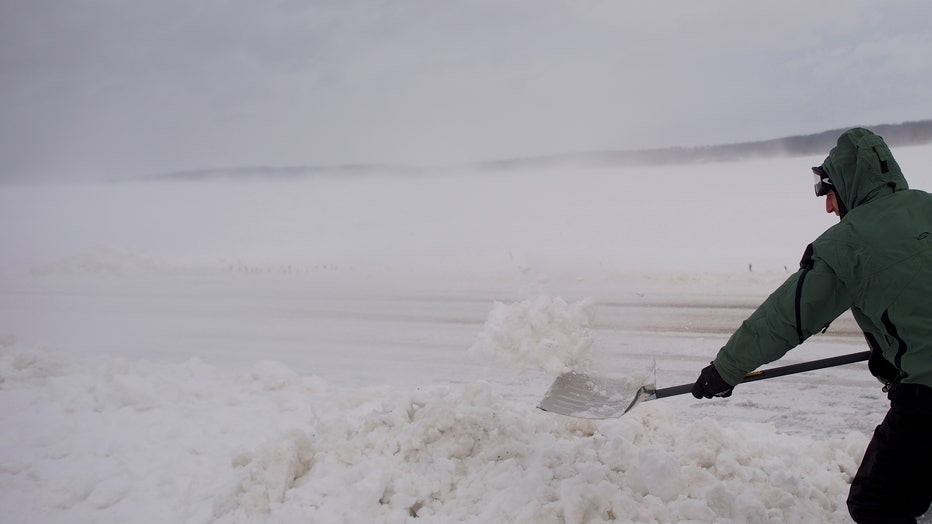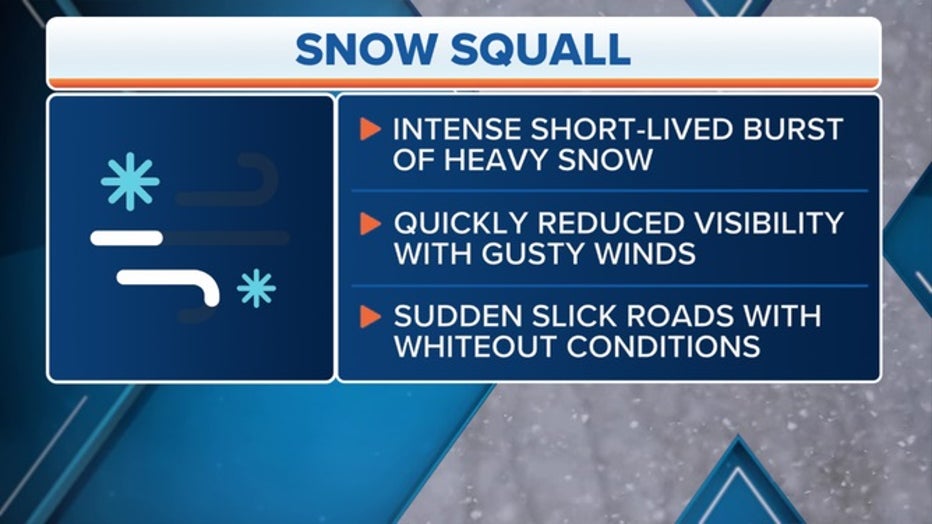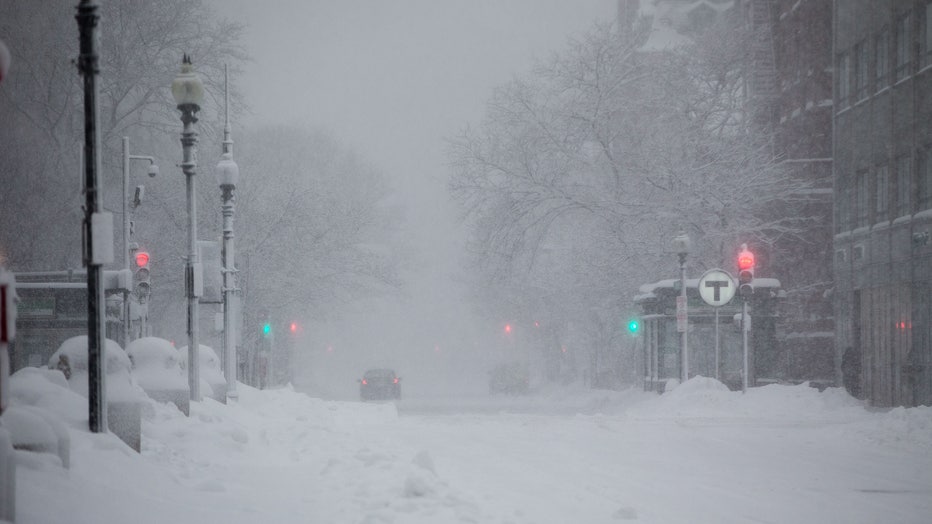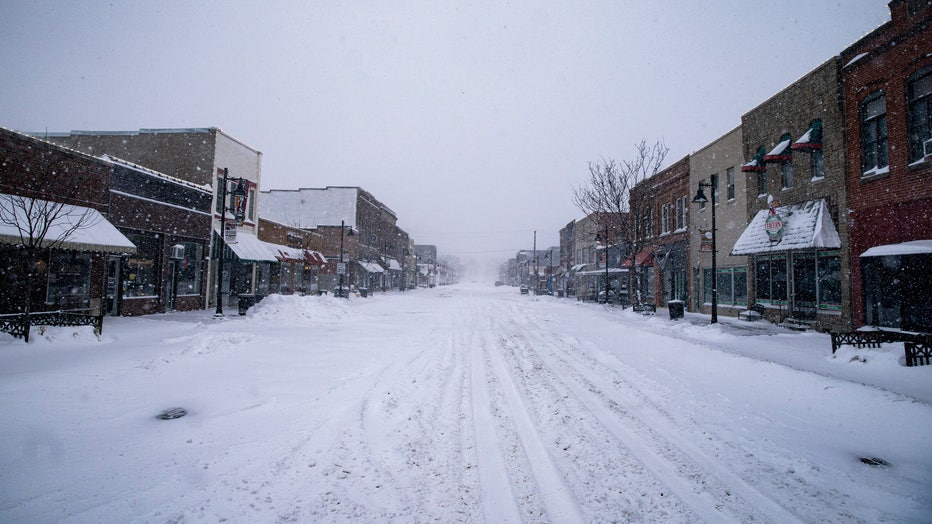What is a snow squall? Here's why they're so dangerous
Millions of Americans facing potentially dangerous cold on Sunday are also faced with the risk of equally or even more dangerous snow squalls.
Arctic storms are threatening near-blizzard conditions in the Northeast and several inches of snow in parts of the South.
In eastern Pennsylvania and parts of northern New Jersey and Delaware, intense bursts of heavy snow known as squalls could cause drastic and sudden drops in visibility and poor road conditions.
RELATED: Arctic blast threatens to impact turnout at Iowa caucuses
The New York City area was also bracing for possible snow squalls, with Mayor Eric Adams warning residents, "if you can stay inside, please do so."

Snow squalls can happen with or without a snowstorm present, according to the National Weather Service (Photo by Mark Makela/Getty Images)
"Try to avoid driving, but if you have to be on the road, please be very careful and take it slow," he said.
The weather service urged people to stay off the roads, saying such squalls could bring "near whiteout conditions and a quick one-half inch of snow in just 10 to 15 minutes."
What is a snow squall?

(FOX Weather)
Snow squalls, or short, intense bursts of snow, are a winter weather hazard often associated with strong cold fronts, according to the National Weather Service. They’re fast-moving events, typically lasting less than an hour.
RELATED: Vermont State Trooper plunges into freezing waters to save 8-year-old: video
Squalls can happen even where there is no widespread winter storm. Often, they produce only minor accumulations of snow.
Upstate New York pummeled with heavy snow
FOX Weather's Katie Byrne joins LiveNOW's Carel Lajara from Buffalo, New York for a look at how much snow is hitting the region amid a severe winter storm.
"Imagine needing your sunglasses one minute, but then you drive into a white wall of wind-driven snow the next and can barely see the car in front of you," FOX Weather’s Brian Donegan explains. "That's what it's like to be caught in a snow squall on a highway."
Why are snow squalls dangerous?
Although snow accumulations are typically an inch or less, the combination of strong winds, fast falling temperatures and poor visibility can create extremely dangerous conditions for drivers.

A nearly empty Dartmouth Street as a snow squall blows through on December 17, 2020 in Boston, Massachusetts. Snow squalls create extremely dangerous driving conditions. (Photo by Scott Eisen/Getty Images)
"The sudden white-out conditions combined with falling temperatures produce icy roads in just a few minutes," the NWS explains. "Unfortunately, there is a long history of deadly traffic accidents associated with snow squalls."
In March 2022, a snow squall in Pennsylvania led to a 50-car chain reaction crash on Interstate 81. Several people were killed and more than two dozen were injured, The New York Times reports.
What’s the difference between a snow squall and a snowstorm?
The difference between a snow squall and a snowstorm is how long it lasts, according to the NWS.

Closed stores in the Valley Junction neighborhood during a winter storm ahead of the Iowa caucus in West Des Moines, Iowa, US, on Friday, Jan. 12, 2024. The polar vortex unleashed an Arctic chill across much of the US this weekend, leaving football f
Snow squalls are usually no longer than an hour, but they’re "extremely intense." A snow storm, on the other hand, could last for several hours or even days.
The Associated Press and FOX Weather contributed to this report.

